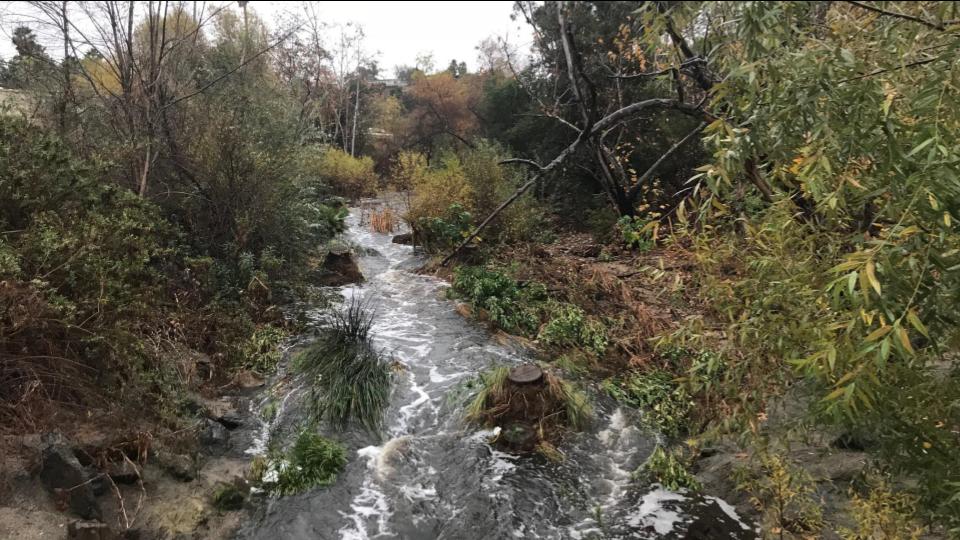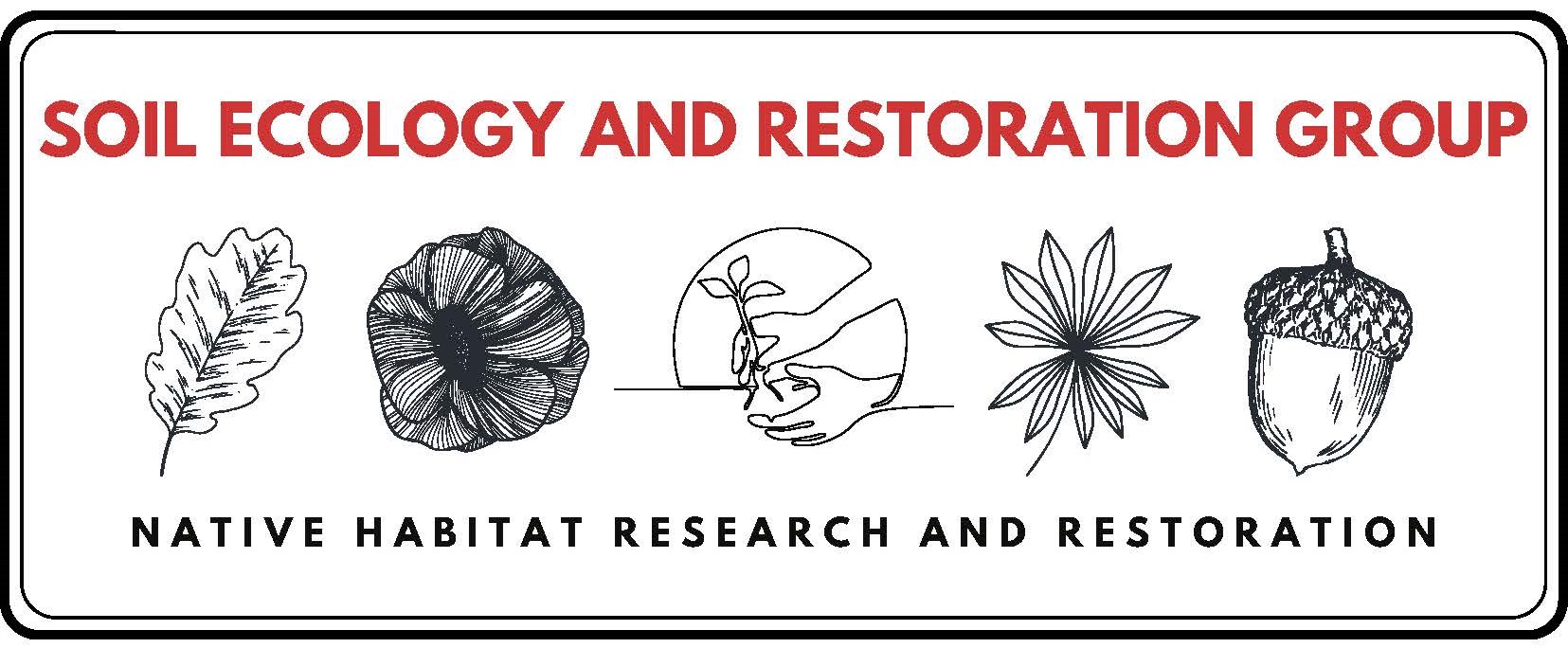
PROJECT OVERVIEW
INTRODUCTION
Alvarado Creek is an urban, channelized stream that flows into the San Diego River. The portion of the Lower Reach of Alvarado Creek targeted in this project borders the Smoke Tree Home Owners’ Association, City of San Diego property, and Caltrans property. The upland south side of the creek mostly consists of native coastal sage scrub vegetation, and the north side of the creek has a buffer of non-native vegetation bordered by private properties. This section of the stream contains dense non-native vegetation with few native trees.
Alvarado Creek has substantial non-native vegetation in the riparian areas, which degrades the natural habitat for native flora and fauna species, contributes to frequent flooding along the tributary, and is representative of urban conditions within the San Diego River watershed. The riparian area of the SDSU Phase of Alvarado Creek is congested with Washingtonia spp (fan palm), Phoenix canariensis (Canary palm), Arundo donax (giant reed), and Schis spp (pepper trees) growing directly into the streambed, and associated vegetation litter. Several other non-native species, such as Shamel as (Fraxinus uhdei) and castor bean (Ricinus communis), also contribute to the thick cover of vegetation. The establishment of non-native vegetation within the channel contributes to reduced flow velocities, which encourages sediment deposition and reduced flow capacity. Removal of non-native species will help restore the natural ecosystem function of the creek.
Giant reed, along with non-native species, have an adverse impact on the hydrology and geomorphology, habitat diversity, and ecological integrity along the San Diego River (SDRWMP, 2005). Numerous downed trees and other streambed vegetation, which catch natural (sediments, dead plant material) and anthropogenic (grocery carts, clothing, etc.) debris, contribute to water constrictions and blockages that exacerbate flooding upstream. Although no signs of habitation by homeless people were found during pre-project surveys, the opening of the canopy is expected to deter unauthorized travel through the area. The removal of the non-native species will allow for the recovery of the native riparian vegetation, help support the native fauna to restore biological integrity and improve the resilience of an urban stream ecosystems.
PROJECT SUMMARY
The SDSURF’s proposed project for SDSU West (Phase V) encompasses approximately 13 acres. Approximately 3 acres of land includes biomass removal consisting mainly of palm trees and other non-native plants. The proposed project also includes maintenance and retreatment of invasive non-native plant species on approximately 10 acres in Phases I-III and in Smoke Tree Home Owners Association Phase. These areas were previously biomassed and retreated from 2015-2018 and in 2019-2020, respectively under previous grants from the Conservancy. The project will also include vegetation monitoring for all Phases described above to assess the success of the restoration work. Vegetation cover will be recorded along transects established in the proposed project area, as well as in the previously completed project areas.
Along the lower section of Alvarado Creek this project will increase flood capacity and promote native recruitment for the riparian habitat which provides wildlife corridors for endangered flora and fauna.
Giant reed stems will be cut down as close to the ground as safely possible using a chainsaw. The stems will then be carried out of the creek in manageable sized bundles. The cut stumps will be immediately treated with herbicide. All biomass will be chipped into a dump truck and taken to a green waste facility.
Following the initial biomass removal by applicant’s vendor, non-native plant control will be conducted on an as-needed basis by qualified Soil Ecology Restoration Group (SERG) personnel by applying approved herbicide.
MEASUREABLE RESULTS
The invasive non-native vegetation removal for Alvarado project began in 2015 under a previous grant agreement with the Conservancy. This work demonstrated multiple benefits to the environment including reduced flood and fire risk, improved water quality, and native habitat restoration.
Flood Reduction
- Invasive removal reduced the risk of flooding in upstream Phases I-III and is anticipated to do the same in Phase V.
Improved water quality
- Preliminary data indicted elevated fecal indicator bacteria numbers during baseflow. Restoration is expected to address this problem by enhancing natural ecosystem functions by interception of runoff and pollutants; This results in increased infiltration which will decrease bacterial and nutrient pollutant loads.
Biodiversity
- Removal of non-native vegetation has been shown to have a positive impact on the recovery of native species. Data from previous restoration efforts in an upstream reach of Alvarado Creek (Phases II-III) showed that the non-native vegetation cover to less than 2% one year after restoration. During the same period, native willow cover increased from 3 to 14%.
